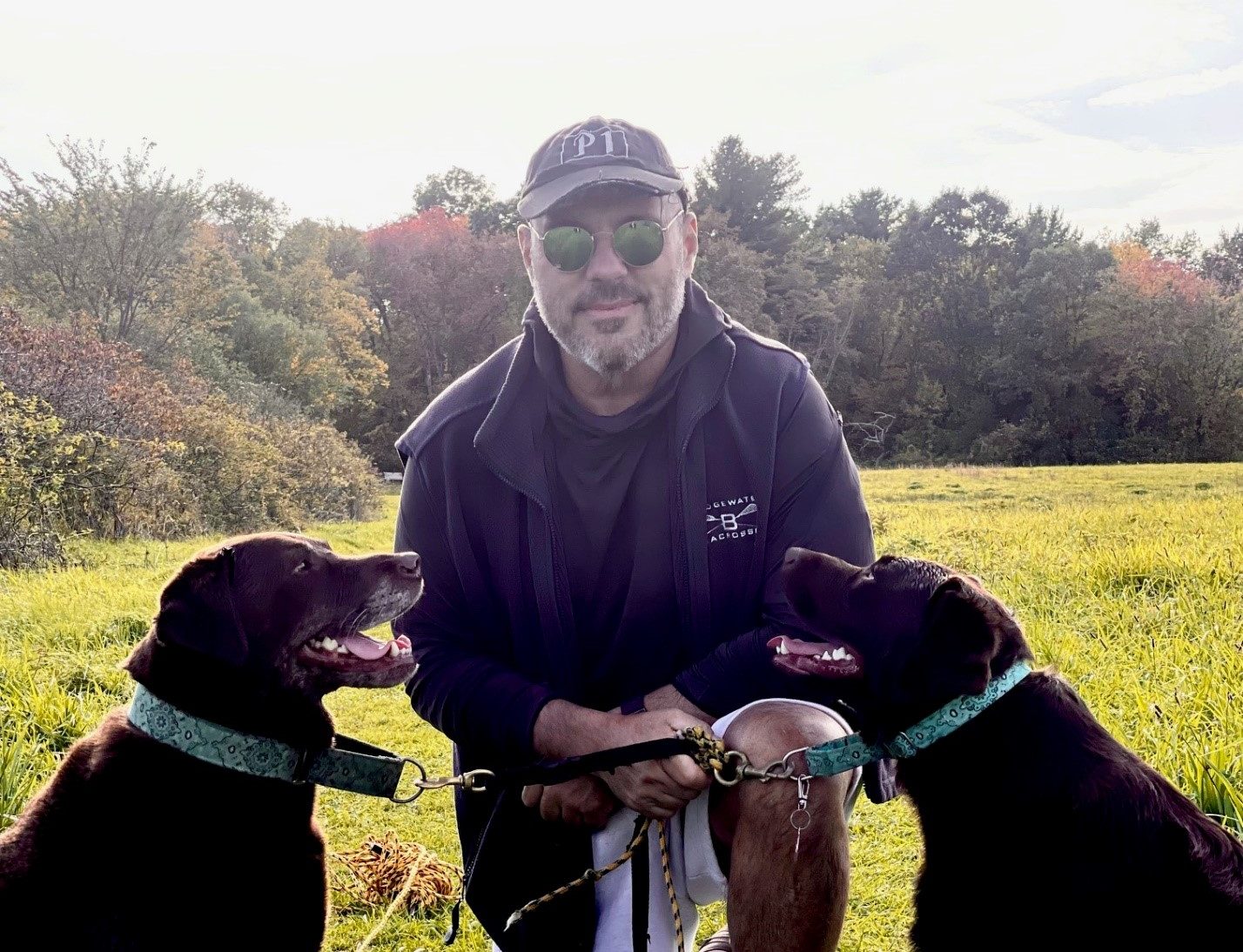From CrossFit competitor to cancer survivor: Surgical team delivers lifesaving outcome for local athlete

Peter Quagge with his two dogs, Luna (left) and Millie (right)
CrossFit athlete and coach Peter Quagge, 61, from Bridgewater, Mass., says he owes much of his health and happiness to his love of the fitness regimen. Little did he know just how true that statement would become one day.
While training at his local CrossFit gym two years ago, Quagge could sense something was off.
“I’m super aware of what goes on with my body, and all of a sudden I ended up having a weird sensation along my ribcage in my abdomen,” he said. “That was the first sign. I had no idea what it was. It was something I hadn’t felt before.”
At the urging of his trainer, Sonia Cormier, Quagge made an appointment with his primary care provider in April 2022. However, the doctor couldn’t find anything wrong with him. Yet he continued to get sicker and sicker. That July, he sought a second opinion and underwent an imaging test known as endoscopic retrograde cholangiopancreatography, which uses a combination of endoscopy and fluoroscopy to examine the pancreatic and bile ducts.
It was then that Quagge discovered he had a tumor on a tiny part of the body called the ampulla of Vater, which serves as a connection point between the pancreatic and bile ducts.
Ampullary cancer is rare, amounting to fewer than 1 percent of new gastrointestinal (GI) cancers diagnosed each year. Even so, Quagge was intimately familiar with it. The mother of his longtime business partner received the very same diagnosis 15 years prior.
“I remember that moment clearly,” Quagge said. “It was 3 in the morning, and I was sitting in the hospital watching the rain fall outside when I called him. He’s the type of person you could call any time, and he said, ‘You’ve got to go talk to this surgeon. He’s fantastic. He worked on my mom.’”
That surgeon was Thomas Clancy, MD, director of Pancreas Surgery in the Brigham’s Division of Surgical Oncology and co-director of the Pancreatic and Biliary Tumor Center at Dana-Farber Brigham Cancer Center. The next day, Quagge reached out to Clancy to schedule an appointment and was seen within 24 hours.

Quagge performs a 265-pound deadlift in March 2024.
After a consultation, Clancy offered Quagge the option of robotic Whipple surgery, a minimally invasive version of the standard Whipple procedure used to treat pancreatic and ampullary cancers. It involves removing the head of the pancreas, the gall bladder, the duodenum, part of the stomach and surrounding lymph nodes.
While not every patient is eligible for a robotic-assisted Whipple procedure, those who do typically enjoy a faster and smoother recovery than the traditional Whipple, which is performed through a large abdominal incision. A traditional Whipple is usually followed by a 7- to 10-day hospitalization.
“It’s one of the bigger operations we do in GI surgery — one that historically is associated with a long hospital stay and possible complications,” said Clancy, whose interprofessional team recently performed their 100th robotic Whipple. “With Peter, we knew we wanted to do this robotically, essentially doing the same operation but through tinier incisions to enable a quicker recovery.”
Four days after undergoing the procedure in August 2023, Quagge was discharged home. And 25 days after his surgery, he was back in the gym.
“I’ll never forget that first day going back into the gym after my surgery — walking in and picking up that first weight, even though I was on weight restrictions, and doing something that was physically challenging, something that my body allowed me to do,” he said. “The fact that I was able to survive this disease, and not everyone is lucky enough to do so, makes me so grateful.”
Following surgery, Quagge underwent chemotherapy at Dana-Farber Cancer Institute to treat any lingering cancer cells. Today, he is doing well with no evidence of cancer.
Last month, Quagge competed in the CrossFit Open a global athletic competition where thousands of people participate in various elements of fitness and strength.
“Last year at this time, competing during chemo, I was pretty much near the bottom. In the U.S., I’m now ranked 118th for my age group,” he said. “I never thought I’d have the opportunity to get to this level after treatment, my operation and everything that happened to me in the last 22 months. It was made possible through the efforts of Dr. Clancy and my nurses at Brigham, as well as my team at Dana-Farber, including Dr. Thomas Abrams, Karen Sommer and others.”

Leave a Reply